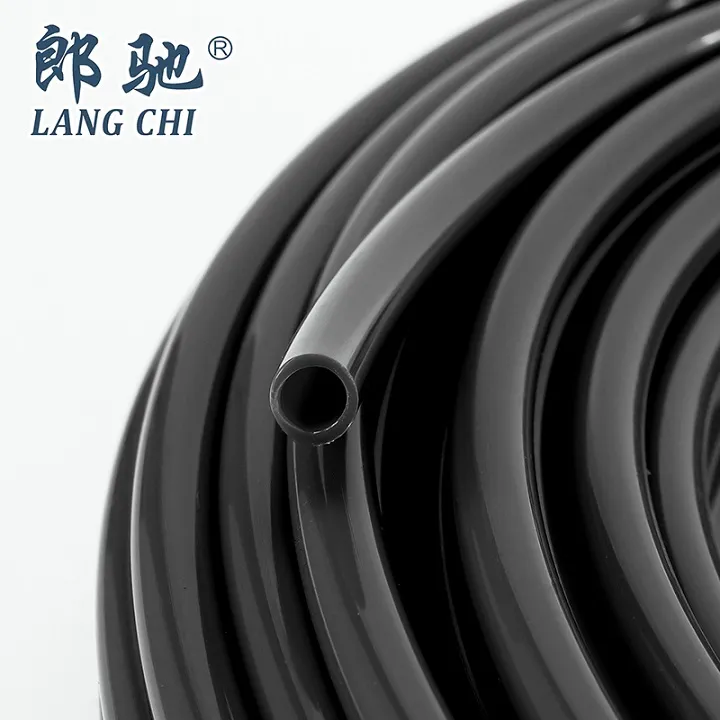
- English
- Español
- Português
- русский
- Français
- 日本語
- Deutsch
- tiếng Việt
- Italiano
- Nederlands
- ภาษาไทย
- Polski
- 한국어
- Svenska
- magyar
- Malay
- বাংলা ভাষার
- Dansk
- Suomi
- हिन्दी
- Pilipino
- Türkçe
- Gaeilge
- العربية
- Indonesia
- Norsk
- تمل
- český
- ελληνικά
- український
- Javanese
- فارسی
- தமிழ்
- తెలుగు
- नेपाली
- Burmese
- български
- ລາວ
- Latine
- Қазақша
- Euskal
- Azərbaycan
- Slovenský jazyk
- Македонски
- Lietuvos
- Eesti Keel
- Română
- Slovenski
- मराठी
- Srpski језик
What is the Difference Between PA6 and PA12?
2024-10-22
Polyamide 6 (PA6) and Polyamide 12 (PA12) are both types of nylon polymers that belong to the broader category of polyamides. While they share some similar characteristics, they differ in several important ways, such as mechanical properties, moisture absorption, and common applications. These differences can influence which material is best suited for specific industrial or consumer uses. Here’s a breakdown of the key differences between PA6 and PA12:
1. Chemical Structure and Composition
PA6 (Polyamide 6):
PA6 is produced by the polymerization of caprolactam, which contains six carbon atoms, hence the name "6." It has a more regular, crystalline structure, leading to higher strength but greater rigidity.
PA12 (Polyamide 12):
PA12 is produced from lauryl lactam, which contains 12 carbon atoms. Its structure is less regular than PA6, resulting in lower density and more flexibility. The longer carbon chain in PA12 leads to differences in mechanical properties compared to PA6.
2. Mechanical Properties
Strength and Rigidity:
- PA6: PA6 has higher tensile strength and rigidity than PA12. It is well-suited for applications requiring high mechanical strength and wear resistance.
- PA12: PA12 is softer and more flexible than PA6, making it ideal for applications where flexibility, low friction, and fatigue resistance are essential.
Impact Resistance:
- PA6: PA6 has good impact resistance, but it can be more brittle at low temperatures.
- PA12: PA12 has better impact resistance, especially at lower temperatures, making it more suitable for environments where temperature fluctuations are common.

3. Moisture Absorption
PA6:
PA6 is highly hygroscopic, meaning it absorbs more moisture from the environment. This can lead to changes in its mechanical properties, such as decreased dimensional stability and strength over time, especially in humid conditions.
PA12:
PA12 absorbs significantly less moisture than PA6, which gives it better dimensional stability and more consistent mechanical properties in humid or wet environments. This makes PA12 a better choice for outdoor applications or those involving contact with water.
4. Thermal Properties
Melting Point:
- PA6: PA6 has a higher melting point of around 220°C (428°F), making it suitable for applications that require high-temperature resistance.
- PA12: PA12 has a lower melting point, typically around 180°C (356°F). While still suitable for a wide range of applications, it may not perform as well as PA6 in high-temperature environments.
Thermal Expansion:
PA12 has a lower coefficient of thermal expansion compared to PA6, which means it is less likely to expand or contract with temperature changes. This adds to its dimensional stability.
5. Chemical Resistance
PA6:
PA6 offers good chemical resistance to oils, greases, and fuels but can be affected by strong acids or bases. Its susceptibility to moisture can also affect its long-term chemical performance.
PA12:
PA12 has superior chemical resistance compared to PA6. It is highly resistant to oils, fuels, greases, and many solvents, and its lower moisture absorption further enhances its chemical stability in demanding environments.
6. Applications
PA6:
- Used in automotive components (e.g., gears, bearings, and engine covers) due to its strength and wear resistance.
- Found in industrial parts such as machine housings and conveyor belts.
- Common in electrical and electronic components for its insulating properties.
PA12:
- Preferred for flexible tubing, hoses, and pipes in industries like automotive and aerospace because of its flexibility and chemical resistance.
- Used in sports equipment, medical devices, and packaging due to its lightweight and low moisture absorption.
- Ideal for outdoor applications such as cable sheathing, since it withstands harsh environmental conditions well.
7. Cost
PA6:
PA6 is generally more affordable than PA12 due to its lower production costs. It is a widely used material, making it a cost-effective choice for applications that require strong, rigid plastic with less emphasis on moisture resistance or flexibility.
PA12:
PA12 is more expensive than PA6, primarily due to the cost of raw materials and production processes. However, its superior chemical resistance, flexibility, and low moisture absorption justify the higher price in many specialized applications.
Conclusion
The choice between PA6 and PA12 depends on the specific requirements of the application. PA6 is the go-to option for applications that demand high strength and rigidity at an affordable price, while PA12 excels in environments where flexibility, moisture resistance, and chemical stability are critical. Understanding these differences can help you choose the right material for your project, ensuring optimal performance and longevity.
LANG CHI is a professional manufacturer & supplier who mainly produce high-quality PA tube with many years of experience. Welcome to inquiry us at nblangchi@nb-lc.cn



